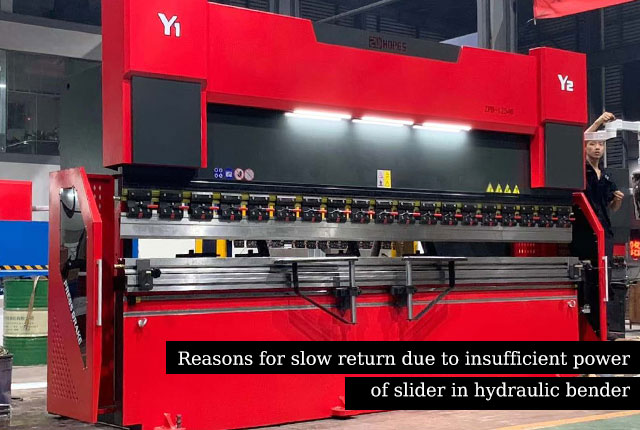WMT CNC Industrial Co., Ltd | All Rights Reserved.Design & Developed by VW Themes

The hydraulic operating system of the hydraulic bender is designed and operated safely, conveniently and flexibly.At present, the product has been widely used in sheet metal processing industry, and plays an important role in industrial production such as shipbuilding, automobile, locomotive and vehicle, aviation, etc.However, with the increasing use in actual production, there are also some typical faults.For example, when the slider holds pressure in the system, the pressing force is seriously insufficient;Slider travels slowly and is far from the return speed.
This has caused tremendous economic losses to the factory. The above faults will be analyzed by introducing the composition and working principle of the hydraulic control system.
When the solenoid is energized, the pressure oil from the hydraulic pump enters the control chamber of the hydraulic control check valve to open it, and the oil from the lower chamber of the hydraulic cylinder flows back to the tank through the valve and throttle valve, while the other way flows back to the tank. Under the action of self-weight, the volume of the empty upper chamber of the hydraulic cylinder is replenished by the oil in the tank. At this time, the speed of the slider is regulated by the valve.
When the slider goes down to the upper die close to the bent plate, the stroke switch sends a message that energizes the solenoid, closes the valve and drains the oil from the lower chamber of the hydraulic cylinder back to the tank. After energizing, the pressure oil from the pump is reversed through the hydraulic control chamber. At the same time, due to energizing, the pressure of the pressure oil in the upper chamber of the hydraulic cylinder rises, and the right check valve disconnects the upper chamber of the hydraulic cylinder from the tank.In this way, the downward movement of the hydraulic cylinder is only driven by the oil output from the pump which enters the upper chamber through the valve and the speed of the slider can be adjusted.
After the work of the hydraulic bender is finished, the solenoid is first powered off for 2 seconds by the electrical system at the instant of the upward return of the slider. During this period, the relief valve can be opened due to the power failure and valve reset, thus reducing the pressure in the upper chamber of the hydraulic cylinder to achieve pre-pressure relief.
The working positions of solenoids and valves remain unchanged. As the resistance to plate deformation increases, the pressure in the upper chamber of the hydraulic cylinder gradually increases until the slider runs to its intended position.
After pressure relief, the solenoid valve is powered off and energized. The pressure oil from the hydraulic pump enters the lower chamber of the hydraulic cylinder and pushes the slider upwards. The oil from the upper chamber of the hydraulic cylinder flows back to the tank through the valve.The fluid pressure on return stroke can be adjusted by the relief valve.